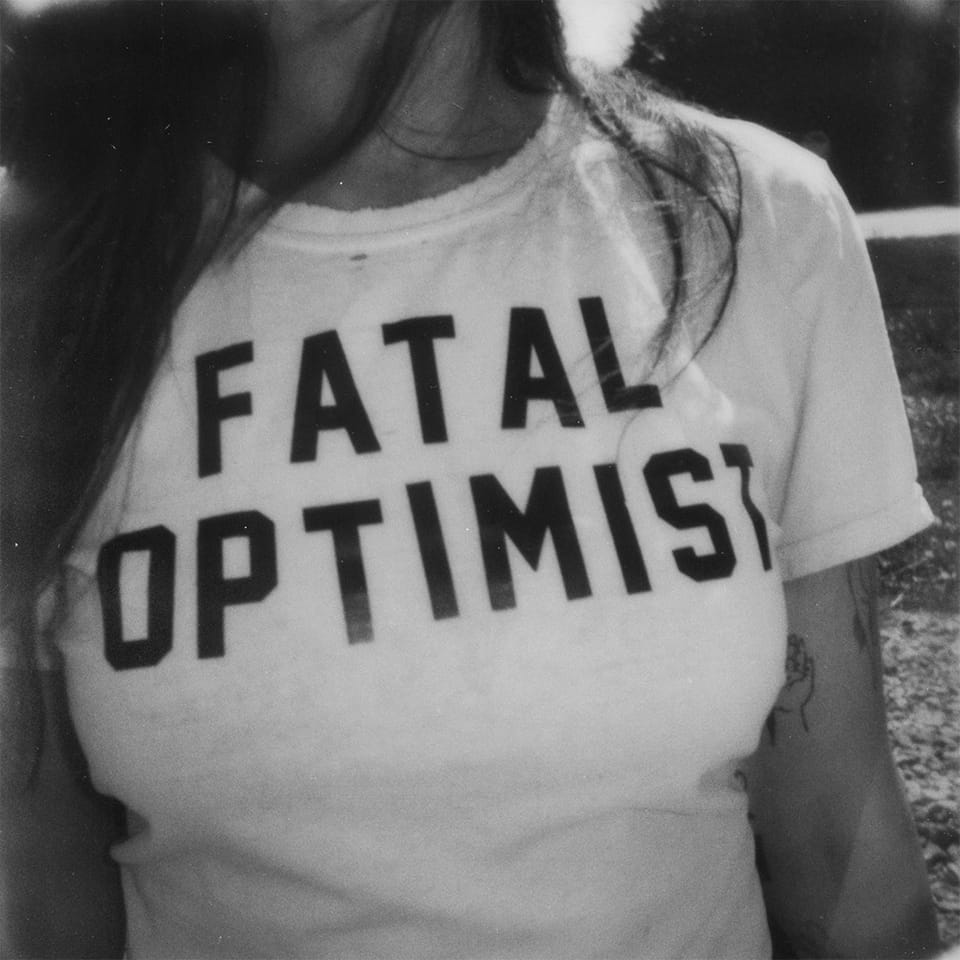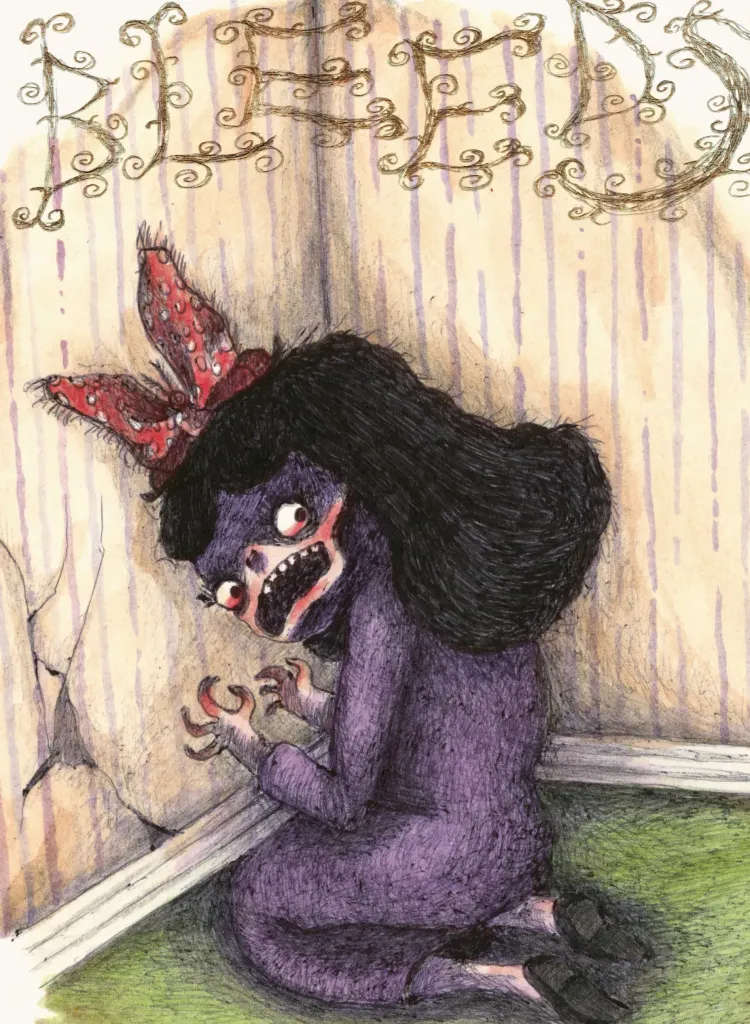Madi Diaz - Fatal Optimist: A Track-by-Track Analysis

“I went to an island to write these songs, not some postcard paradise with palm trees and piña coladas, but a jagged, wind-whipped place where the solitude could cut as deep as the heartbreak. That’s where I found Fatal Optimist—in the raw ache of being alone with myself, sifting through the wreckage of a love I thought would last forever.”
The year is 2025, and Nashville’s Madi Diaz has just dropped Fatal Optimist, her third album since 2021, a record that feels like the final chapter in a trilogy of heartbreak that began with History of a Feeling and continued with the Grammy-nominated Weird Faith. This isn’t just another singer-songwriter strumming through her sorrows; this is Diaz at her most exposed, her voice and acoustic guitar carrying the weight of a soul laid bare. The album’s importance lies in its unflinching honesty, a stark departure from the collaborative sheen of her earlier work. Where Weird Faith was a vulnerable plunge into new love’s uncertainty, Fatal Optimist turns inward, quieter, lonelier, like the sound of footsteps crunching through ash after a fire. It’s a philosophical shift—less about the external drama of romance and more about the internal reckoning of what it means to keep hoping when hope feels like a dare.
The album’s themes revolve around heartbreak, resilience, and the peculiar defiance of optimism in the face of loss. Diaz wrote these songs after retreating to a Northeast island—not for a tropical escape, but for the kind of isolation that forces you to face yourself. Recorded with co-producer Gabe Wax, the album strips everything down to its bones: mostly just Diaz and her guitar, with every creak of the strings and every catch in her voice left raw. The cover art mirrors this starkness—a grainy, intimate shot of Diaz, her face half-shadowed, eyes looking somewhere beyond the frame, as if caught mid-thought. It’s not polished or posed; it’s a visual echo of the album’s unadorned truth.
This track-by-track journey invites you to walk with Diaz through the ashes, to feel the weight of her solitude and the stubborn spark of hope that refuses to die. Each song is a fragment of her story, a map of a heart that’s been broken but still beats heavy metal.
1. Hope Less
Initial Impressions: Hope Less opens Fatal Optimist like a whispered confession, setting the tone for the album’s raw intimacy. It’s not a flashy opener but a quiet gut-punch, establishing the album’s stripped-down aesthetic and its focus on the liminal space between moving on and staying stuck.
Lyrics Analysis:
“Whose move is it to move on?” Diaz sings, and it’s the kind of line that stops you cold, like catching your reflection in a cracked mirror. The double entendre of the title—hope less, hopeless—captures the paradox of post-breakup life: wanting to let go but clinging to the ghost of what was. The lyrics, © 2025 Madi Diaz (ASCAP), are sparse yet surgical, cutting to the bone of indecision. “I’m still waiting for the call that never comes,” she admits, a nod to the universal ache of expecting closure that never arrives. The symbolism here is less about grand metaphors and more about the mundane weight of absence—phone screens that stay dark, nights that stretch too long.
Melody and Musicality: The song is just Diaz and her acoustic guitar, the chords simple but deliberate, each note ringing out like a sigh. The tempo is slow, almost hesitant, mirroring the lyrical indecision. Her voice carries a fragile strength, breaking slightly on the high notes, as if she’s singing through tears she refuses to let fall. The minimalism amplifies the emotion, leaving no room for distraction.
Issue Relevance: Hope Less speaks to the modern struggle of letting go in a world where we’re constantly connected yet achingly alone. It’s about the paralysis of heartbreak, the way we torture ourselves with “what ifs” while knowing the answer won’t change. In 2025, when social media makes it easy to stalk an ex’s life, Diaz’s question—“Whose move is it?”—feels like a cultural mirror, reflecting our collective inability to move forward.
Insights & Anecdotes: Diaz wrote this song during her island retreat, a period she described in interviews as “singular sad mining.” In a 2025 NPR interview, she said, “I needed to be alone to hear myself think, to let the hurt breathe.” The song’s rawness comes from that solitude, recorded in a single take with Gabe Wax, who encouraged her to keep the imperfections. “Every crack in my voice is real,” she told Rolling Stone. “I didn’t want to hide.”
Personal Evaluation: This song hit me like a quiet storm. That opening line made me pause my headphones, sit back, and just breathe. It’s not just about heartbreak; it’s about the shame of not being ready to let go, the way you judge yourself for still caring. Diaz makes that vulnerability feel universal, not indulgent. It’s a song that doesn’t just describe pain—it makes you feel it.
Summative Evaluation: Hope Less is a perfect opener, intimate and unyielding. Its strength lies in its simplicity, but it risks feeling too understated for listeners craving a bigger sound. Still, it sets the stage for the album’s raw emotional core, a promise Diaz delivers on.
2. Ambivalence
Initial Impressions: Ambivalence picks up where Hope Less leaves off, a rustic, slightly rougher track that feels like a conversation with a ghost. It’s a transitional piece, deepening the album’s exploration of lingering attachment.
Lyrics Analysis:
“You’re always right here no matter who I’m with,” Diaz sings, © 2025 Madi Diaz (ASCAP), capturing the haunting presence of an ex in every new moment. The word “ambivalence” itself is a thesis—loving and hating someone simultaneously, wanting to move on but tethered to memory. The lyrics are grounded in everyday imagery: “I see you in the coffee shop, in the rearview mirror.” It’s not poetic grandeur but the quiet torture of familiarity, a reminder that heartbreak isn’t always dramatic—it’s in the small, stubborn details.
Melody and Musicality: The guitar here is grittier, the strumming more insistent, like a pulse quickening under stress. Diaz’s voice feels closer, almost conspiratorial, as if she’s leaning in to tell you something she’s ashamed of. The melody is cyclical, looping back on itself, mirroring the lyrical theme of being stuck in a loop of memory.
Issue Relevance: This song taps into the universal experience of carrying someone with you long after they’re gone. In a culture obsessed with “closure,” Ambivalence challenges the idea that moving on is a clean break. It’s especially resonant in 2025, where digital footprints make it impossible to fully escape the past.
Insights & Anecdotes: Diaz shared in a Billboard interview that Ambivalence came from a moment of frustration during her island writing. “I was trying to write a happy song, but this came out instead,” she said. “It’s like my heart wouldn’t let me lie.” The song was recorded live, with Wax keeping the room’s natural reverb to enhance its intimacy.
Personal Evaluation: I nodded along to this one, caught by how it nails that embarrassing truth of still thinking about someone you shouldn’t. Diaz’s voice feels like a friend confessing over late-night coffee, and that rawness makes the song stick. It’s not a standout, but it’s a necessary piece of the album’s emotional arc.
Summative Evaluation: Ambivalence is a solid track, its strength in its relatability and understated delivery. It lacks the immediate punch of some other songs but serves as a crucial bridge in the album’s narrative, grounding the listener in Diaz’s internal struggle.
3. Feel Something
Initial Impressions: Feel Something is the album’s emotional centerpiece, a raw, confessional track that feels like a late-night journal entry. It’s a standout, instantly relatable, and likely to resonate with fans of Haim or Taylor Swift’s folk-pop era.
Lyrics Analysis:
“I wanna be somewhere I can walk home from, stoned and alone and half laughing,” Diaz sings, © 2025 Madi Diaz (ASCAP), and it’s like she’s plucked a thought from your own head. The lyrics are a collage of fleeting moments—walking home, chasing a feeling, trying to be okay with yourself. The line “I wanna feel something without it wrecking me” is a quiet manifesto, capturing the tension between craving emotion and fearing its cost. The imagery is vivid yet universal, painting a picture of post-breakup drift.
Melody and Musicality: The melody is soft but expansive, with Diaz’s harmonies layering like a sigh over the gentle acoustic strums. The tempo is unhurried, giving space for the lyrics to breathe. The song builds subtly, never overpowering the emotion but letting it swell naturally. It’s sparse yet feels massive, a testament to Diaz’s vocal control.
Issue Relevance: Feel Something speaks to the millennial and Gen Z struggle of seeking authenticity in a world that often feels performative. It’s about the longing to reconnect with yourself after loss, a theme that resonates in an era of mental health awareness and self-care culture.
Insights & Anecdotes: Diaz told NPR that this song was written in one sitting, late at night on the island. “I was so tired of feeling numb,” she said. “I just wanted to feel anything, even if it hurt.” The song’s harmonies were inspired by her love for Haim, a nod she confirmed in a Paste interview.
Personal Evaluation: This one got me. I’ve had those nights, walking home alone, half-laughing at my own messiness. Diaz captures that so perfectly it feels like she’s seen my soul. The song’s intimacy is its power—it doesn’t shout, but it lingers.
Summative Evaluation: Feel Something is a triumph, blending universal themes with personal specificity. Its only flaw is that it might feel too familiar to fans of Diaz’s earlier work, but its emotional depth makes it a highlight.
4. Good Liar
Initial Impressions: Good Liar lifts the mood slightly, a wry, self-aware track that balances optimism and denial. It’s a standout for its clever lyricism and subtle humor, serving as a lighter moment in the album’s heavy emotional landscape.
Lyrics Analysis:
“I’ve always believed in magic, even when bad things happen,” Diaz sings, © 2025 Madi Diaz (ASCAP), before dubbing herself “the queen of silver linings.” The lyrics explore the art of faking it—pretending you’re fine when you’re falling apart. “Through these rose-colored glasses, I see what I want to,” she admits, a metaphor for the self-deception we lean into after heartbreak. It’s both a confession and a celebration of resilience, acknowledging the lie while embracing its necessity.
Melody and Musicality: The guitar is brighter here, with a slightly faster tempo that gives the song a conversational bounce. Diaz’s voice is playful but tinged with pain, her phrasing almost smirking at times. The melody is catchy without being poppy, keeping the album’s intimate vibe while adding a touch of levity.
Issue Relevance: In a world where social media often demands a curated facade, Good Liar resonates as a commentary on performative happiness. It’s about the pressure to appear “okay” and the quiet rebellion of admitting you’re not. Diaz’s humor makes it accessible, especially for younger listeners navigating authenticity in a filtered age.
Insights & Anecdotes: Diaz shared in a Vulture interview that Good Liar was inspired by a conversation with her brother, who teased her about always finding a silver lining. “I wanted to own that,” she said. The song was recorded with minimal overdubs, preserving its live feel, as Wax noted in a Mix magazine feature.
Personal Evaluation: I laughed at “queen of silver linings” because I’ve been there, spinning pain into growth like it’s a superpower. Diaz’s wit makes this song feel like a friend winking at you across a bar, knowing you’re both faking it. It’s a moment of lightness that doesn’t feel forced.
Summative Evaluation: Good Liar is a gem, blending humor and heartache seamlessly. Its lighter tone risks feeling out of place, but Diaz’s delivery ties it to the album’s core. It’s a song you’ll hum long after it ends.
5. Lone Wolf
Initial Impressions: Lone Wolf is a playful yet stinging track, using animal metaphors to explore the inevitability of human nature. It’s a transitional piece, keeping the album’s introspective tone while adding a touch of wry amusement.
Lyrics Analysis:
“Lamb’s gonna lamb, god planned it, wolf’s gonna wolf, god dammit,” Diaz sings, © 2025 Madi Diaz (ASCAP), with a sharpness that’s both funny and cutting. The lyrics use the lone wolf metaphor to reflect on people who can’t change, no matter how much you wish they would. It’s less about heartbreak and more about acceptance, recognizing that some patterns are unbreakable. The humor softens the sting, but the truth lands hard.
Melody and Musicality: The guitar is steady, almost plodding, like a heartbeat you can’t ignore. Diaz’s voice is crisp, her delivery almost theatrical, emphasizing the song’s playful edge. The melody is simple but effective, letting the lyrics take center stage without distraction.
Issue Relevance: Lone Wolf touches on the timeless frustration of loving someone who won’t change, a theme that resonates across generations. In 2025, it feels like a nod to the self-awareness culture, where we’re all trying to “do the work” but sometimes have to accept others won’t.
Insights & Anecdotes: Diaz told American Songwriter that Lone Wolf came from a moment of exasperation during her island writing. “I was so mad at someone for being exactly who they are,” she laughed. The song was recorded in one take, with Wax keeping the raw energy intact.
Personal Evaluation: This one made me smile, but it stung too. That “god dammit” line is so human, like Diaz is shaking her fist at the universe. It’s a song that feels like a knowing nod to anyone who’s ever hoped for change and gotten none.
Summative Evaluation: Lone Wolf is a strong track, its humor and brevity making it a palate cleanser. It risks feeling slight compared to the album’s heavier moments, but its sharp wit keeps it memorable.
6. Heavy Metal
Initial Impressions: Heavy Metal is a standout, a tongue-in-cheek anthem that flips the Nashville stereotype on its head. It’s Diaz at her most defiant, claiming resilience through a clever double entendre, and it’s a highlight of the album’s emotional range.
Lyrics Analysis:
“I’m starting to look just like my mother / When shit gets hard, I go harder,” Diaz sings, © 2025 Madi Diaz (ASCAP), and it’s a line that hits like a freight train. The metaphor of “heavy metal” isn’t about music but durability—her heart isn’t gold or silver but something tougher, forged in pain. “It’s a good thing my heart is so heavy metal” is both a boast and a shield, acknowledging the scars that make her unbreakable. The lyrics are raw and unapologetic, blending humor with grit.
Melody and Musicality: The guitar is steady, with a slight edge to the strumming that gives it a rockier feel than the rest of the album. Diaz’s voice is bold, almost taunting, as she leans into the song’s defiance. The melody is simple but anthemic, building to a quiet intensity that feels like a clenched fist.
Issue Relevance: Heavy Metal is a feminist rallying cry, celebrating the strength of women who endure without losing their softness. In 2025, amid ongoing conversations about resilience and mental health, it feels like a middle finger to anyone who underestimates Diaz—or any woman—because of their vulnerability.
Insights & Anecdotes: Diaz wrote this after a phone call with her brother, who’s in a speed metal band called Sublation, as she shared in a 2025 NPR interview. “I told him I wanted to write something hard, but it came out soft,” she said. The song was recorded with a single mic, capturing the room’s natural grit, per Wax’s production notes in Sound on Sound.
Personal Evaluation: This one got under my skin. That line about looking like her mother stopped me cold—it’s so specific yet universal, like Diaz is speaking for every woman who’s had to toughen up. The humor in “heavy metal” makes it feel like a wink, but the pain underneath is real. It’s a song I’ll carry with me.
Summative Evaluation: Heavy Metal is a triumph, blending wit, defiance, and vulnerability into one of the album’s strongest tracks. Its only risk is that its humor might overshadow its depth for some listeners, but it’s a standout nonetheless.
7. If Time Does What It’s Supposed To
Initial Impressions: If Time Does What It’s Supposed To is a deep ache, a slow-burn track that captures the quiet torture of waiting for healing. It’s not a standout but a necessary piece of the album’s emotional journey, grounding the listener in Diaz’s patience.
Lyrics Analysis:
“I can’t make it down the block without you getting in my thoughts,” Diaz sings, © 2025 Madi Diaz (ASCAP), turning a mundane walk into a battlefield of memory. The lyrics are understated but devastating, focusing on the small ways heartbreak lingers. The title itself is a question, doubting the cliché that time heals all wounds. There’s no grand symbolism here, just the lived-in truth of trying to move on and failing.
Melody and Musicality: The guitar is gentle, almost fragile, with a slow tempo that mirrors the song’s theme of waiting. Diaz’s voice is soft but steady, carrying a weariness that feels earned. The melody is minimal, letting the lyrics’ quiet pain take center stage.
Issue Relevance: This song resonates with anyone who’s been told “it gets better” and wondered when. In 2025, with mental health conversations emphasizing patience and process, If Time Does What It’s Supposed To feels like a raw acknowledgment that healing isn’t linear.
Insights & Anecdotes: Diaz wrote this song late in her island retreat, as she told The FADER. “I was so tired of waiting to feel better,” she said. “This was me admitting I didn’t know if I ever would.” The song was recorded with minimal takes to preserve its vulnerability.
Personal Evaluation: This one hurt. That line about not making it down the block is so ordinary yet so heavy—it’s the kind of thing you don’t admit out loud. Diaz’s delivery makes it feel like she’s sitting next to you, sharing the weight. It’s not my favorite, but it’s real.
Summative Evaluation: If Time Does What It’s Supposed To is a solid track, its strength in its quiet honesty. It risks blending into the album’s slower moments, but its emotional truth keeps it compelling.
8. Why’d You Have to Bring Me Flowers
Initial Impressions: Why’d You Have to Bring Me Flowers, one of the album’s singles, is Diaz at her sharpest, a cutting yet tender track that captures the sickly comfort of familiar pain. It’s a standout, replayable for its wit and rawness.
Lyrics Analysis:
“My toxic trait is hanging on, your toxic trait is showing up,” Diaz sings, © 2025 Madi Diaz (ASCAP), and it’s a line that’s both laugh-out-loud funny and brutally real. The flowers are a metaphor for the empty gestures that keep you tethered to someone who hurts you. The lyrics are conversational yet poetic, dissecting the push-pull of a relationship that won’t let go. “It’s toughest to leave a good guy,” she admits, a nod to the complexity of loving someone who’s not bad, just wrong.
Melody and Musicality: The guitar is crisp, with a slightly faster tempo that gives the song a restless energy. Diaz’s voice is equal parts venom and vulnerability, her phrasing sharp but never overdone. The melody is catchy, with a slight country twang that nods to her Nashville roots.
Issue Relevance: This song speaks to the toxic cycles we fall into, especially in relationships that blur the line between love and pain. In 2025, with conversations about boundaries and self-worth at the forefront, it’s a relatable anthem for anyone trying to break free.
Insights & Anecdotes: Diaz told NPR that this song was inspired by a real moment: an ex showing up with flowers after a breakup. “I was so mad, but I kept them,” she laughed. The song was recorded live, with Wax preserving the raw emotion of the first take.
Personal Evaluation: This is the one I’ve replayed most. That “toxic trait” line is so sharp it made me laugh, but the pain underneath cut deep. It’s like Diaz is calling you out and holding your hand at the same time. It’s a song that feels alive.
Summative Evaluation: Why’d You Have to Bring Me Flowers is a highlight, blending humor, heartache, and relatability into a near-perfect track. Its accessibility makes it a potential hit, though some might find it too direct. It’s Diaz at her best.
9. Fatal Optimist
Initial Impressions: The title track closes the album with a surprising shift—faster, louder, and fuller than anything before it. Fatal Optimist feels like a rebirth, a defiant declaration of hope after the album’s long journey through grief.
Lyrics Analysis:
“I hate being right, I know exactly what this is, I’m a fatal optimist,” Diaz sings, © 2025 Madi Diaz (ASCAP), summing up the album’s core tension: hoping despite knowing better. The lyrics are less about heartbreak and more about acceptance, choosing to keep believing in magic even after it burns. “I’ll put my whole heart in it,” she vows, a line that feels like a mission statement for her life and art. The imagery is brighter, more forward-looking, like sunlight breaking through clouds.
Melody and Musicality: This is the only track with drums, giving it a driving rhythm that feels like motion after the album’s stillness. The guitar is fuller, joined by subtle percussion and bass, creating a sound that’s almost anthemic. Diaz’s voice soars, her harmonies layered to give the song a sense of lift. It’s melodic and alive, a departure from the album’s spareness that feels earned.
Issue Relevance: Fatal Optimist is a love letter to resilience, capturing the punk-rock defiance of hope in a cynical world. In 2025, with global challenges piling up, it’s a reminder that choosing optimism is an act of courage, not naivety.
Insights & Anecdotes: Diaz told Rolling Stone that this song was the last written for the album, a moment of clarity after months of grief. “I realized I wasn’t done hoping,” she said. The fuller instrumentation was a deliberate choice, as Wax noted in Mix, to signal a new chapter for Diaz.
Personal Evaluation: This song felt like a release, like exhaling after holding your breath for eight tracks. It’s not just a closer—it’s a promise that there’s light at the end of the tunnel. Diaz’s voice carries such conviction that you can’t help but believe her.
Summative Evaluation: Fatal Optimist is a brilliant closer, its fuller sound and hopeful tone providing a cathartic end to the album’s journey. It risks feeling jarring after the spareness of the other tracks, but its energy and message make it a perfect capstone.
Overall Album Reflection
Fatal Optimist is Madi Diaz at her most vulnerable and powerful, a record that strips away artifice to reveal the raw heart beneath. Its cohesion lies in its simplicity—just Diaz, her guitar, and her truth—but that same minimalism can feel repetitive for listeners craving more sonic variety. The album’s strength is its emotional depth, with standout tracks like Heavy Metal, Why’d You Have to Bring Me Flowers, and Feel Something showcasing Diaz’s ability to turn personal pain into universal art. Its only weakness is that some tracks, like Ambivalence and If Time Does What It’s Supposed To, blend into the album’s slower pace, lacking the immediate impact of the highlights. Still, Fatal Optimist is a triumph of storytelling, a testament to the stubborn hope that keeps us going. Like a late-night talk with a friend who’s been through hell and come out stronger, it’s a record that stays with you, heavy metal heart and all. Rating 80/100





Member discussion